
How to Recognize and Manage Hormonal Imbalance
Recognizing and managing hormonal imbalance starts with an understanding of hormones and the impact they have on our bodies. Hormones (like cortisol, estrogen, and melatonin) are chemical messengers that are produced by our endocrine system. After producing hormones, the endocrine system then sends them directly into our blood system to glands (like the adrenal, pituitary, and thyroid) that are located throughout the body. Picture the post office sorting everyone’s mail and then sending it to the correct mailbox— this is similar to what the endocrine system does.
Unfortunately, our endocrine systems don’t always work perfectly. A comprehensive review of population studies estimated that endocrine disorders affect at least 5% of adults in the United States (Golden et al., 2009). Let’s take a look at why that may be.
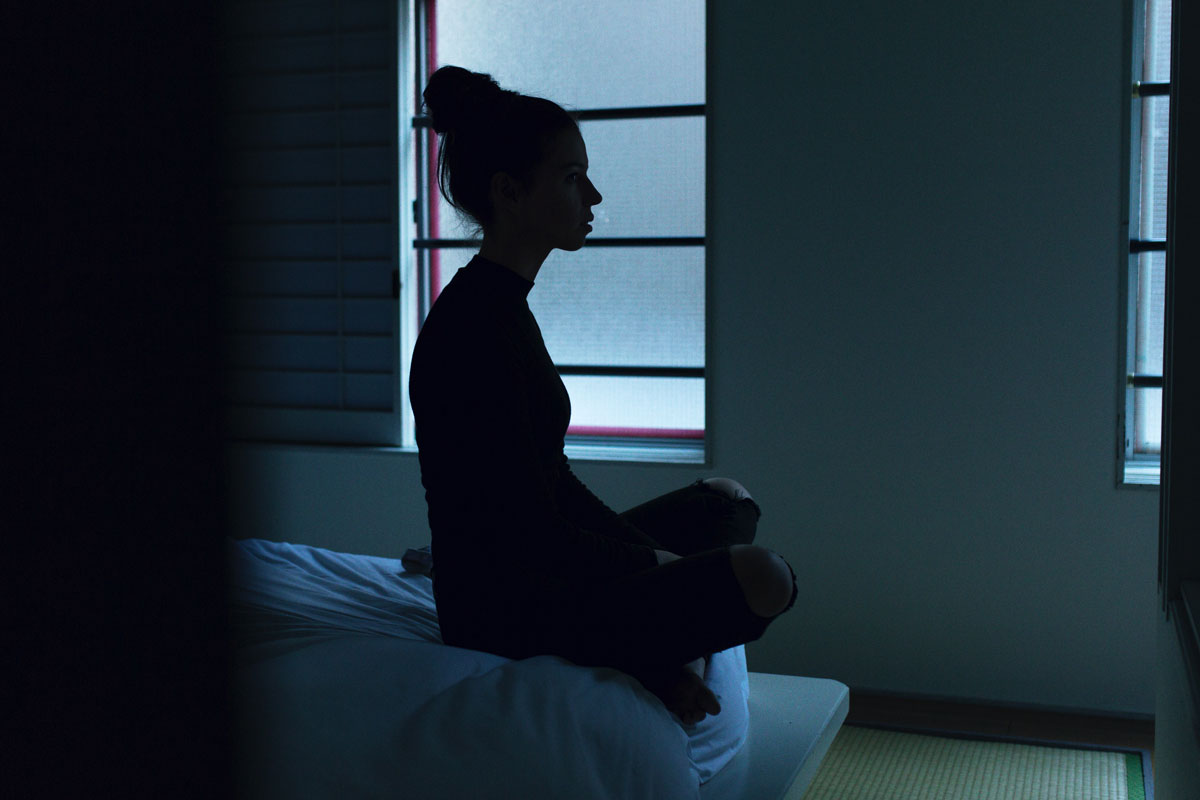
Signs of Hormonal Imbalance
In considering whether one has a hormonal imbalance, there are several symptoms to look for that might point to an imbalance. These include:
1) An unexplained or sudden weight gain or loss
2) Changes in sleep patterns
3) Thinning or excessive hair growth
4) Hot flashes and/or night sweats
5) Vaginal dryness, bleeding outside of menses, and heavy, irregular, or painful periods.
Contrasting these symptoms to what are naturally occurring hormonal changes due to life cycles, like puberty, pregnancy, breastfeeding, perimenopause, menopause, and andropause is important in teasing out potential endocrine malfunctioning. Understanding what is normal is the first step in determining what might be seen outside the normal range.

Possible Causes of Hormonal Imbalance
Disease
There are several leading diseases that can result in a hormonal imbalance, with the most common being diabetes, hyper- or hypothyroidism, hypoglycemia, polycystic ovary syndrome (PCOS), endocrine disorders, Cushing’s syndrome, or Addison’s disease.
Lifestyle
Lifestyle routines can be implicated in contributing to an imbalance. Dietary choices, nutritional intake, chronic or extreme stress, and weight gain are all things that can also play a role in hormonal imbalances. Hormonal imbalance can result if one is burning the candle at both ends, consuming a diet of over-processed food, using too many stimulants, experiencing chronic constipation, or getting inadequate sleep (Bakunina, 2019).
Certain medications including hormonal replacement, birth control, anabolic steroids, chemotherapy, and radiation therapy are also implicated in exacerbating hormonal imbalance.
Lastly, exposure to environmental chemicals as well as pesticides and herbicides has also been tied to causing hormonal imbalances (Diamanti-Kandarakis et al., 2009).

Stress
Stress, something that seems rampant these days, can disrupt our body’s natural hormone balance, causing issues such as obesity, insomnia, low energy, or a decreased sex drive. When stress hormones are frequently released—or remain in the bloodstream for a sustained time—they can contribute to a hormonal imbalance.
The role of stress and its impact on endocrine disorders has been recognized in recent studies. Chronic stress can lead to changes in the level of hormones that are implicated in Graves’ disease, thyroid crisis, and obesity (Ranabir & Reetu, 2011).
Cortisol, estrogen, and melatonin are a few standout examples of hormones affecting and affected by our stress levels. Cortisol, in particular, is influenced by stress while estrogen and melatonin affect our reproductive organs and sleep cycles, respectively.
For More,
This is a very complex issue. For more information about hormonal imbalances, consider subscribing to The Herbarium, the Herbal Academy’s membership site that contains two particularly relevant intensives:
Natural Approaches to the Management of PCOS: Finding Balance
The Estrogen Balancing Act: Estrogen Excess
The Herbarium also contains a number of helpful, in-depth articles, including:
Hormones and the Menstrual Cycle: A Holistic Approach
Reclaiming Your Cycle: Herbal Support for Premenstrual Symptoms and Painful Periods
Herbal, Lifestyle, and Nutritional Approaches to Hormonal Imbalance
While fast-paced lifestyles, increased expectations, and responsibilities in balancing family and work-life all have a depleting effect on the body, there are steps we can take. Herbs along with diet and lifestyle improvements can help to improve hormonal balance.
Focusing on nutrient-dense foods, lifestyle changes, and the addition of herbs can all help lay the path for long-term health. Stress reduction through meditation, exercise, and other practices are shown to help normalize cortisol levels (Spritzler, 2017). Getting an adequate night’s sleep helps to balance hormones including cortisol and insulin (Spritzler, 2017). Consuming adequate protein and healthy fats, while avoiding an excessive intake of refined sugar and carbs, all play an important part in hormonal balance (Spritzler, 2017).

If you are experiencing any of the signs outlined above, seeking the advice of a medical professional is an important first step in the screening process. When addressing hormonal imbalances, which can be a challenge, it can be helpful to work with a clinical herbalist to sort out symptoms and explore treatment strategies.
There are many herbs that can be effective in addressing hormonal imbalances but before beginning it is important to research potential herb/drug interactions. When taking an herb for the first time, it is advised to start with half the recommended dose or a few days to determine sensitivity, then increase to a full dose. Herb drug interactions can be found in the following two books, American Products Association’s Botanical Handbook and Herbal Contraindications & Drug Interactions Medicine. The following websites provide additional information:
Herbs at a Glance: National Center for Complementary and Integrative Health
Herb Search: Memorial Sloan Kettering Cancer Center
Black cohosh (Actaea racemosa) root
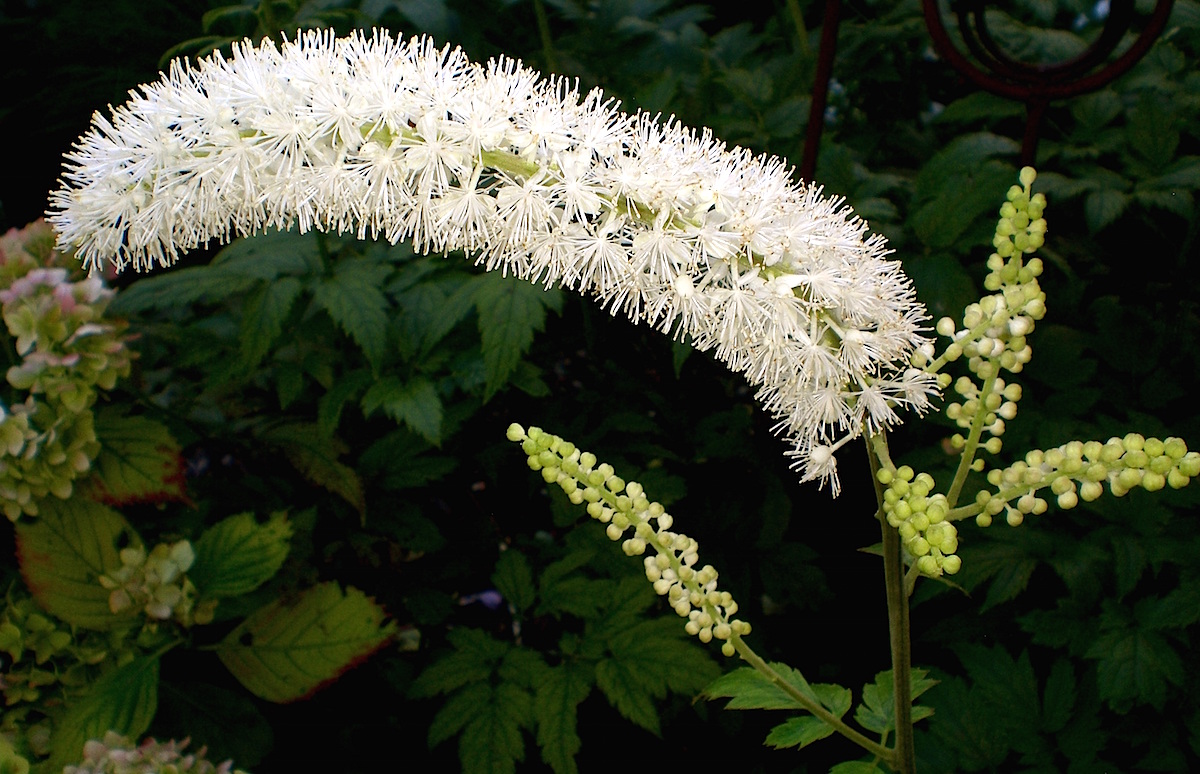
Black cohosh (Actaea racemosa) is native to eastern North America and commonly used to support an array of gynecological issues and imbalances. The German Commission E specifically uses it for premenstrual symptoms, dysmenorrhea, and menopausal conditions (Geller & Studee, 2005). In the United States, it is widely used in addressing menopausal symptoms including hot flashes, night sweats, vaginal dryness, heart palpitations, sleep disturbances, and irritability (Office of Dietary Supplements – Black Cohosh, 2020). Black cohosh, when combined with chasteberry and dong quai, seems to act synergistically to address menopausal symptoms (Tierra, 1998). Those who are pregnant should not take black cohosh except under the supervision of their healthcare providers (Gardner & McGuffin, 2013). As black cohosh is on the United Plant Savers at-risk list, it is important to seek a cultivated source.
Dosage: Tincture, 2-4 ml, (1:5, 60%), 3x/day; Tea, 0.5-1 tsp dried root decocted in 1 cup (8 fl oz) water for 10-15 minutes, 3x/day (Hoffmann, 2003).
Chaste tree (Vitex agnus-castus) berry
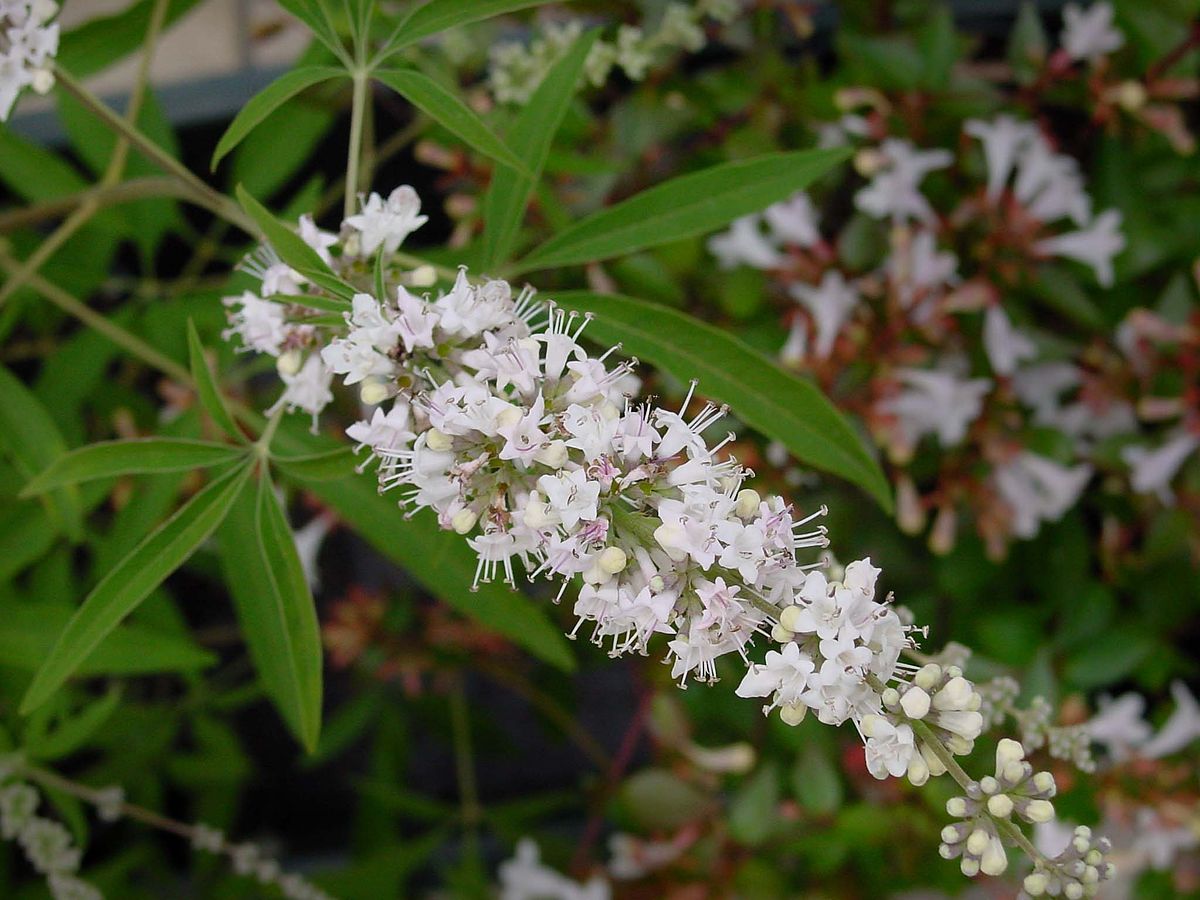
Chaste tree (Vitex agnus-castus) berry has long been a favorite herb for supporting hormone production and balance. Dioscorides, a Greek physician, pharmacologist, botanist, and author of De Materia Medica, an encyclopedia about herbal medicine, categorized chaste berry as a warming astringent used to address menstrual flow (Bango, 2019). The Medical Formulary of Al-Samarqandi, a contemporary translation of Arabic texts from around 1200 AD, shows that the use of Vitex agnus-castus was known by Persians and a variety of uses were carried through the “Golden Age” of Arabic sciences (Hobbs, 1996). Today it is used as a normalizer of reproductive hormones (Hoffmann, 2003). Many herbalists use chaste berry for premenstrual symptoms, including acne, pain, amenorrhea, dysmenorrhea, decreasing fibroids, establishing regular menstrual cycles, and addressing hot flashes. In a double-blind placebo-controlled study, chaste tree berry was found to be safe, well-tolerated, and effective in moderate to severe premenstrual syndrome (He et al., 2009).
There are a couple of precautions to note which are applicable even in totally healthy individuals. Chaste tree berry should be discontinued in the case of pregnancy. Although in many cases it is used to support fertility it should be discontinued ideally by 6 weeks into pregnancy, or as soon as one knows or suspects that they could be pregnant. Additionally, chaste tree berry may interfere with hormonal contraceptives. Ultrasound studies show that ovulation can occur when chaste tree berry is combined with common oral contraceptives (Trickey, 2003).
Dosage: Tincture, 2.5 ml (1:5, 60%), 3x/day; Tea, 1 tsp infused in 1 cup (8 fl oz) water for 15 minutes, 3x/day. (Hoffmann, 2003).
Dong quai (Angelica sinensis) root
Dong quai (Angelica sinensis) root has been used in Chinese Medicine (CM) to invigorate and nourish the blood, pointing to its use in anemia, palpitations, arthritis, and rheumatism (Tierra, 2003). Dong quai moistens the intestines and can be helpful in cases of chronic constipation (Tierra, 2003). In Western herbalism, it is used primarily as a tonic herb to bring about balance in gynecological issues (Tierra, 2003).
Herbalist Rosemary Gladstar (1993) speaks about its use as a long-term herb to support and nourish the reproductive organs along with the transition into menopause. According to noted herbalists Thomas Easley and Steven Horne, dong quai has traditionally been used to rebuild the blood due to monthly menstruation and to ease pain and pelvic congestion often associated with menses (Easley & Horne, 2016).
Dosage: Tincture, 2-4 ml (1:5, 70%), 3x/ day; Tea, 4.5-9 g dried root decocted in 2 cups water for 20 minutes, consume 2-4 fl oz 3x/day (Easley & Horne, 2016).
Red clover (Trifolium pratense) flower and leaf
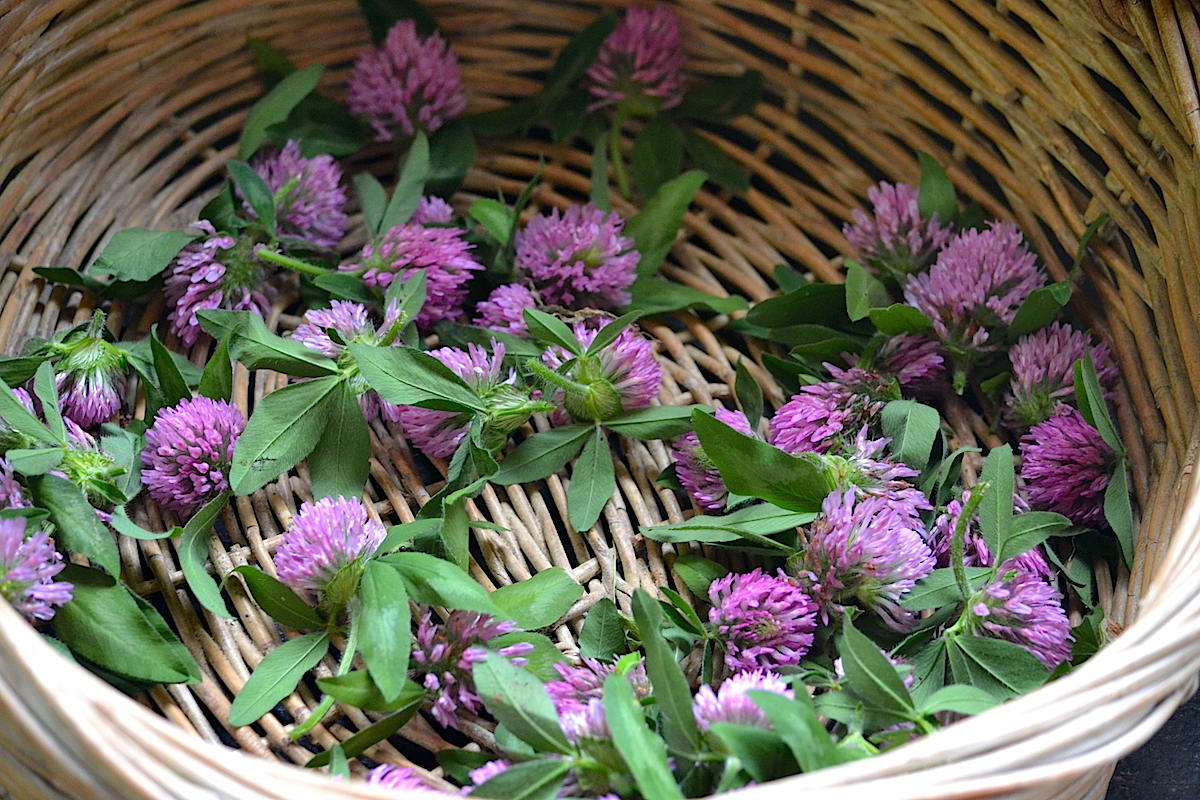
Red clover (Trifolium pratense), known as an alterative, has the ability to improve or “alter” our body’s ability to function. Alteratives increase our nutrient assimilation and waste removal in specific body systems including the lungs, liver, colon, kidneys, and skin (Tierra, 2003). Red clover contains formononetin, a phytoestrogen with weak estrogenic activity known for reducing hot flashes and strengthening bone health (Tierra, 2003). Red clover contains high levels of phytosterols, better known as the building blocks of hormones, which block estrogen receptor sites—thus potentially inhibiting estrogen-dependent imbalances. In a randomized, placebo-based trial, red clover isoflavone supplementation was effective in reducing vasomotor frequency and intensity in postmenopausal women (Lipovac et al., 2012).
Dosage: Tincture, 2-4 ml, (1:5, 40%), 3x/day; Tea, 1-3 tsp in 1 cup (8 fl oz) water, steeped 10-15 minutes (the longer you steep, the more minerals are extracted), 3x/day (Hoffmann, 2003).
Goji (Lycium chinense) berries
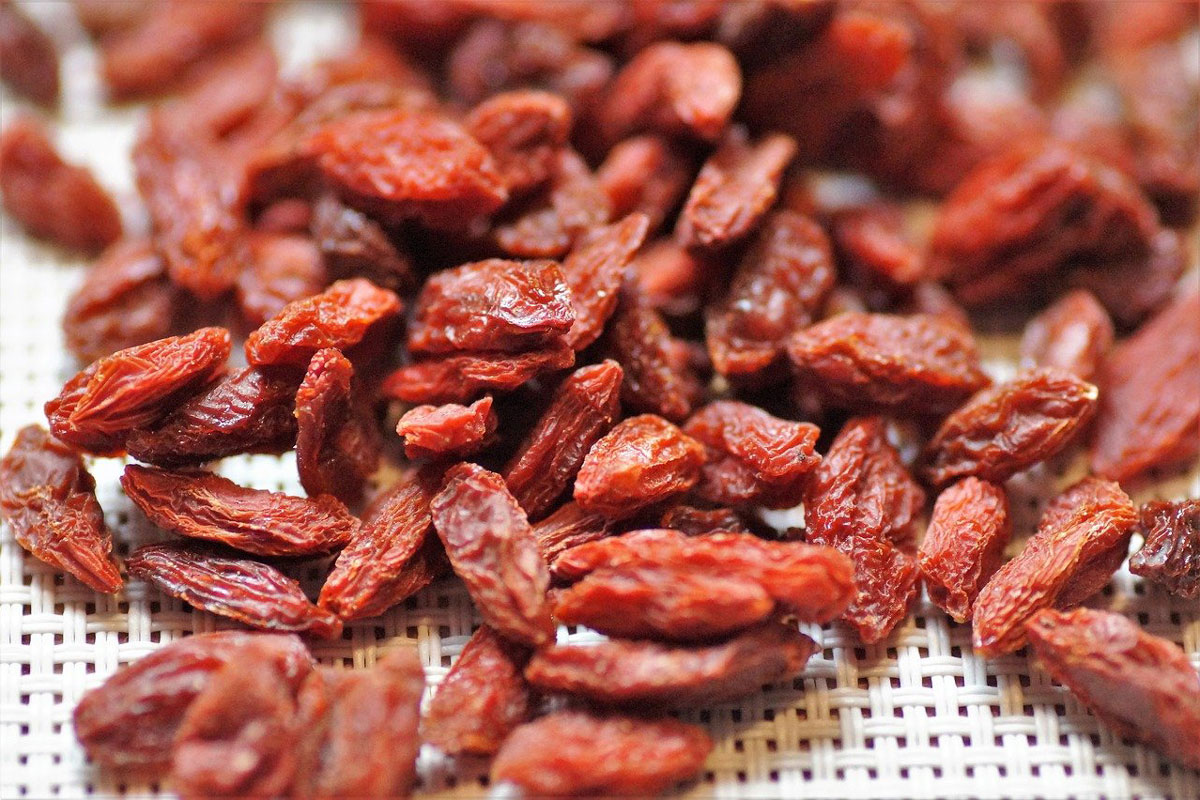
Goji (Lycium chinense) berries are primarily used in the West as a food, yet in CM goji berries are used for building blood. Blood deficiency is associated with prematurely graying hair, night sweats, diminished visual acuity, dryness, and chronic lung disorders. The berries contain abundant polysaccharides, flavonoids, amino acids, minerals, and vitamins. Blood-nourishing herbs such as goji provide easily assimilated minerals, thus stimulating the proliferation of new blood cells. Goji has also historically been used in CM for dizziness, dry cough, vertigo, dry eyes, blurred vision, and menopausal issues (Tierra, 2003).
Dosage: Tea, 9-18 g decocted in 2 cups (16 fl oz) water for 20 minutes, consume 2-4 fl oz 3x/day (Tierra, 2003).
Shatavari (Asparagus racemosus) root
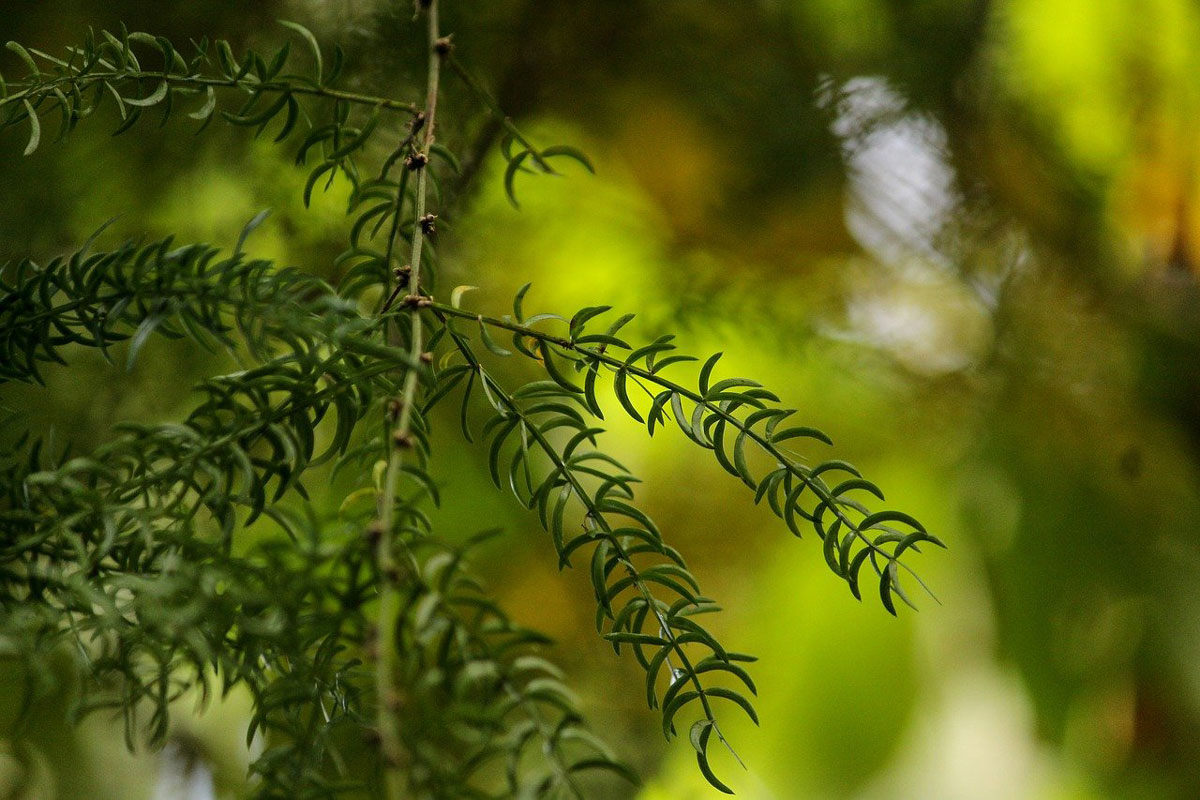
Shatavari (Asparagus racemosus), a well-known Ayurvedic herb, is considered a rasayana. Rasayana herbs promote health, strength, and longevity. Shatavari root is traditionally cooked in milk to increase its digestibility and tonic qualities. It has significant phytoestrogenic activity, and, for this reason, has a range of effects on the reproductive system (Alok et al., 2013).
Ayurvedic herbalist Sebastian Pole (2013) points to its use in supporting fertility, fetal development, symptoms of menopause, threatened abortion or multiple miscarriages, insufficient lactation, low sperm count, and low libido. It‘s also traditionally used to help regulate the menstrual cycle and calm the nerves. A main steroid in shatavari, shatavarin, has been shown in numerous animal studies to modulate hormonal levels and flow, with a specific affinity for breast, gonadal, and genitourinary tissue (Thomsen, n.d.; Pandey et al., 2005). Human clinical studies have focused on the constituent prolactin as a galactagogue with no human studies available for shatavarin.
Dosage: Tincture, 3-15 ml (1:3, 25%), 2-3x/day; Drink, 3-30 g root or powder decocted in milk or ghee (Pole, 2013).
Ashwagandha (Withania somnifera) root
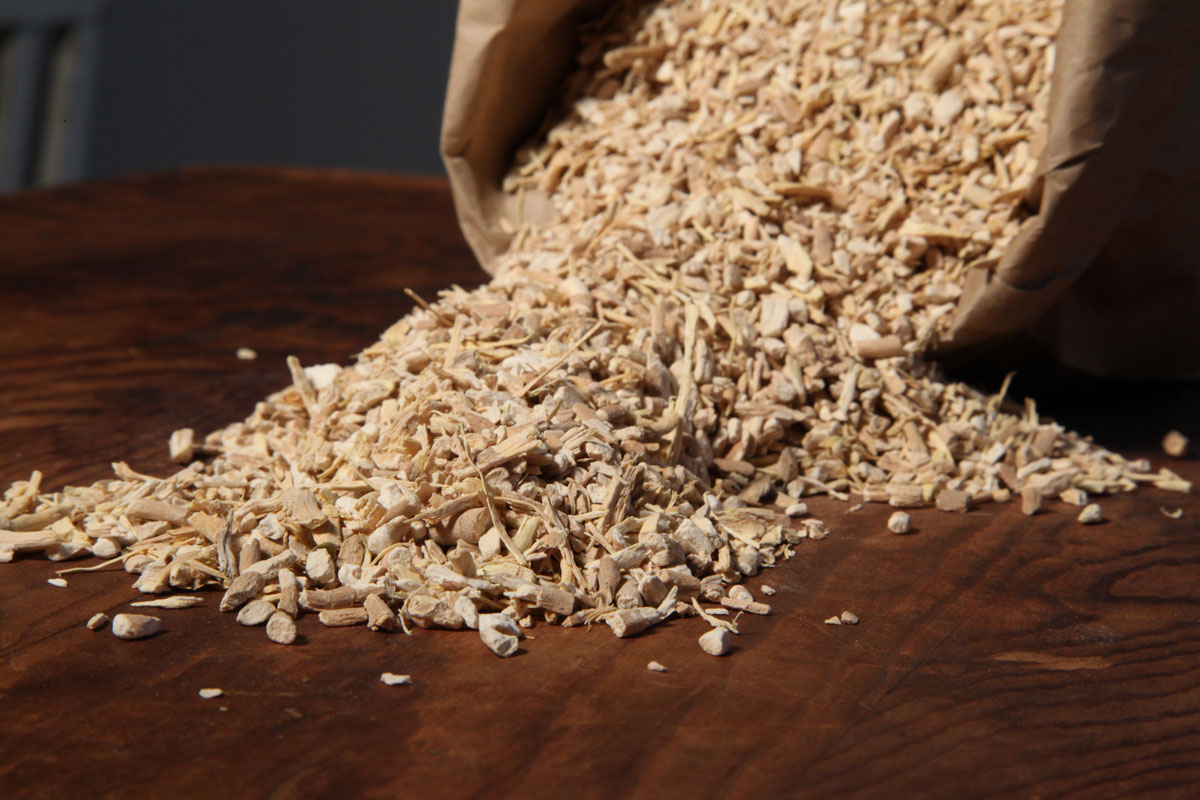
Ashwagandha (Withania somnifera) is traditionally viewed in Ayurveda as an herb for promoting vigor in men; however, it is also known as an adaptogen protecting the body from stress. Adaptogens have multiple mechanisms of action in our bodies, including bolstering the hypothalamic-pituitary (HPA) axis. In prolonged cases of stress, the HPA responds by releasing elevated levels of stress hormones, including cortisol, resulting in the eventual inability of our adrenal glands ability to respond (McBurney, n.d.).
Ashwagandha has been shown to decrease cortisol levels in persons under chronic stress, restore healthy adrenal function, and normalize the sympathetic nervous system (Pole, 2013).
Ashwagandha has been shown to decrease cortisol levels in persons under chronic stress, restore healthy adrenal function, and normalize the sympathetic nervous system (Pole, 2013). In a randomized control study of naturopathic care vs. psychotherapy intervention using ashwagandha, the study’s conclusion pointed to differences between mental health, concentration, fatigue, social functioning, vitality, and overall quality of life outcomes based on survey results with the naturopathic care group exhibiting greater clinical benefit (Cooley et al., 2009). In the study, participants were screened and divided into two groups. The naturopathic group received dietary counseling, deep breathing relaxation techniques, a standard multivitamin, and ashwagandha (300 mg b.i.d. standardized to 1.5% withanolides, prepared from root). The psychotherapy participants received weekly psychotherapy, techniques for relaxation, coaching for a healthy diet, and a placebo. Although the intervention’s differences and outcomes are not clear cut, it does point to the need for further human-based clinical trials.
Ashwagandha is often combined with other nervines to address sleep and insomnia.
Dosage: Tincture 6-15 ml, (1:3, 45%) per day; Drink, 3-9 g per day decocted in 1 cup (8 fl oz) milk for 15 minutes (Tierra, 2003).
Nettle (Urtica dioica) seed
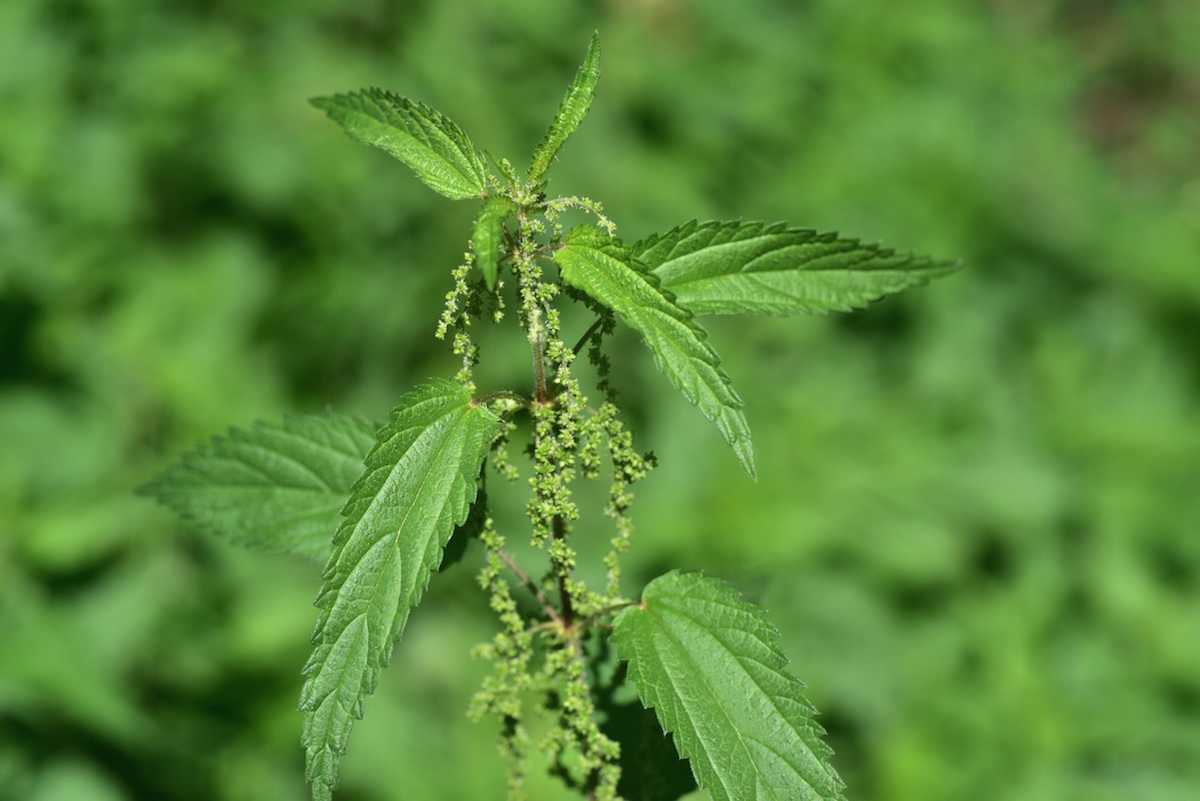
Nettle (Urtica dioica) seed supports the adrenal glands and improves function of the thyroid in hypothyroidism. The seeds are rich in minerals, such as iron, calcium, magnesium, and silicon, and they also contain fatty acids and vitamin E. This rich nutrition and its ability to support adrenal function lend well to revitalizing energy and supporting periods of acute stress.
Nettle seed is helpful for balancing reproductive hormones and smoothing out premenstrual symptoms. Nettle seed’s “feel good” effects turn on the neurotransmitters acetylcholine and serotonin. Serotonin regulates mood, appetite, and sleep, while acetylcholine stimulates the autonomic nervous system to improve mood, attention span, and sensory perception (Wilde, n.d.)
Dosage: 1-2 tbsp seeds/day (Kress, 2004). (See Nettle Seed and Kale Crackers recipe, below!)
Hormonal Support Tea
This deeply tonifying and tasty tea can be used on a regular basis to address underlying symptoms of hormonal imbalance. Yield: 2 servings.
1/2 teaspoon white peony (Paeonia lactiflora) root
1/2 teaspoon ashwagandha (Withania somnifera) root
1 tablespoon goji (Lycium barbarum) berries
1 teaspoon tulsi (Ocimum tenuiflorum) leaf
2 teaspoons red clover (Trifolium pratense) flower and/or leaf
- Combine shatavari, white peony, ashwagandha, and goji berries in a saucepan.
- Add 2 cups of water, bring to a simmer, cover, and cook on low for 15 minutes.
- Remove from heat, add tulsi and red clover flowers, cover, infuse for 5-10 minutes.
- Strain, sweeten to taste (if desired) and divide tea into two servings.
- Drink one cup in the morning and one in the evening.
Stress Release Tea
Damiana is a valued relaxant, so this tea is particularly useful for anyone experiencing hormonal imbalance due to stress. Damiana is also a digestive stimulant and mood enhancer. This tea combines nervines, adaptogens, and blood-nourishing herbs to aid in relaxation.
1 part damiana (Turnera diffusa) leaf and stem
1 part alfalfa (Medicago sativa) aerial parts
1 part red clover (Trifolium pratense) flower and/or leaf
1 part nettle (Urtica dioica) seed
1/2 part skullcap (Scutellaria lateriflora) aerial parts
1/2 part rose (Rosa spp.) hips
- Combine all of the herbs into a glass jar
- Shake until well combined.
- To brew, steep 2 teaspoons of tea blend in 1 cup (8 fl oz) hot water, covered, for 20 minutes. Strain and enjoy!
Nettle Seed and Kale Crackers
Food and nutrition is the foundation of good health. This recipe is packed with nutritional goodness combining seeds and herbs into a cracker that can be used as a base for nut butters, hummus, or spreadable cheese.
2 cups kale leaves, de-stemmed
½ cup nettle (Urtica dioica) seed
½ cup pumpkin seeds, sprouted*
½ cup sunflower seeds, sprouted*
2 tablespoons chia seeds (ground)
¾ cup rose (Rosa spp.) hips infusion (2 tablespoons of rose hips infused in hot water for 30 minutes and then strained)
2 tablespoons coconut sugar
1 teaspoon sea salt
2 tablespoons brewer’s yeast
- Preheat oven to 350 degrees Fahrenheit.
- Line a baking sheet with parchment paper.
- Add the rose hips infusion and kale to a blender and blend until almost smooth.
- Transfer the kale and rose mixture from the blender to a large bowl. Mix in all remaining ingredients, stirring well.
- Let mixture sit for 30-60 minutes to let flavors meld.
- The mixture should be firm enough to roll with a rolling pin, if not then add a few more pinches of ground chia seeds and let sit for 15 minutes.
- Put mixture on the parchment-lined baking sheet, covering with another large piece of parchment paper.
- Use a rolling pin to roll out the mixture until it’s 1/8-1/16 of an inch thick. Remove top parchment paper.
- Using a pizza cutter or sharp knife, cut into 2-by-2-inch squares.
- Put into the oven and cook for 15-20 minutes.
- Take out and turn the squares over. Bake for an additional 10 minutes or until the edges start to brown and they firm up.
- Remove from heat, cool completely.
- Store in an airtight container.
*Never sprouted your own seeds before? Check out this post for step-by-step instructions.
In Closing,
Managing hormonal imbalances involves adopting a holistic approach to lifestyle, diet, and the use of herbs. Implementing stress-reduction techniques such as meditation, exercise, and getting a good night’s sleep helps balance cortisol and insulin levels. Consuming sufficient protein and healthy fats while avoiding excessive intake of refined sugar and carbs all play an essential part in balancing hormones. Lastly, look to our plant allies to offer additional support as we navigate and strengthen our long-term health outcomes.
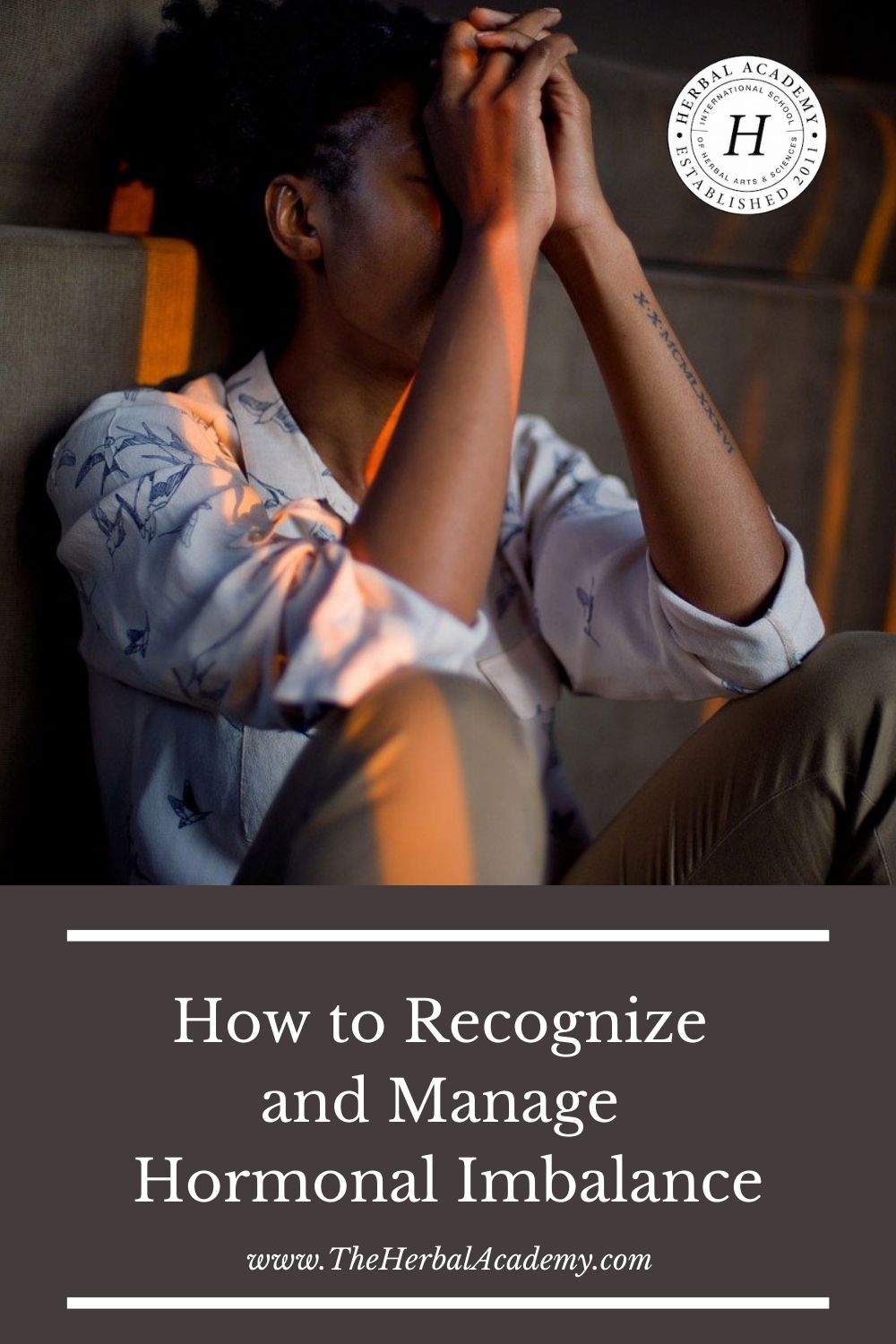
REFERENCES
Alok, S., Jain, S.K., Verma, A., Kumar, M., Mahor, A., & Sabharwal, M. (2013). Plant profile, phytochemistry and pharmacology of Asparagus racemosus (Shatavari): A review. Asian Pacific Journal of Tropical Disease, 3(3), 242–251. https://doi.org/10.1016/S2222-1808(13)60049-3
Bakunina, T. (2019). Why hormonal imbalance is affecting your body more than you know. Retrieved from https://diagnost.com/blog/hormonal-imbalance/
Bango, K. (2019). Chasteberry, vitex for natural PMS relief. Retrieved from https://herbs.motherearthliving.com/chasteberry-vitex-for-natural-pms-relief/
Cheng, J., Zhou, Z.W., Sheng, H.P., He, L.J., Fan, X.W., He, Z.X., …, Zhou, S.F. (2014). An evidence-based update on the pharmacological activities and possible molecular targets of Lycium barbarum polysaccharides. Drug design, development and therapy, 9, 33–78. https://doi.org/10.2147/DDDT.S72892
Cooley, K., Szczurko, O., Perri, D., Mills, E.J., Bernhardt, B., Zhou, Q., & Seely, D. (2009). Naturopathic care for anxiety: A randomized controlled trial ISRCTN78958974. PloS one, 4(8), e6628. https://doi.org/10.1371/journal.pone.0006628
Cocco, P. (2002) Scientific Electronic Library Online. Revisao review. Retrieved from:
https://www.scielosp.org/pdf/csp/2002.v18n2/379-402/en
Diamanti-Kandarakis, E., Bourguignon, J., Giudice, L., Hauser, R., Prins, G., Soto, A., Zoeller, T., & Gore, A. (2009). Endocrine-disrupting chemicals: An endocrine society scientific statement. Endocrine Reviews, 30(4), , 293-342. https://doi.org/10.1210/er.2009-0002
Dongre, S., Langade, D., & Bhattacharyya, S. (2015). Efficacy and safety of ashwagandha (Withania somnifera) root extract in improving sexual function in women: A pilot study. BioMed Research International, 2015, 284154. https://doi.org/10.1155/2015/284154
Easley, T., & Horne, S. (2016). The modern herbal dispensatory. Berkeley, CA: North Atlantic Books.
Gardner, Z., & McGuffin, M. (2013). American Herbal Products Association botanical safety handbook (2nd ed.). Boca Raton, FL: CRC Press.
Geller, S.E., & Studee, L. (2005). Botanical and dietary supplements for menopausal symptoms: What works, what does not. Journal of Women’s Health, 14(7), 634–649. https://doi.org/10.1089/jwh.2005.14.634
Gladstar, R. (1993). Herbal healing for women: Simple home remedies for women all of the ages. New York, NY: Fireside.
Golden, S.H., Robinson, K.A., Saldanha, I., Anton, B., & Ladenson, P.W. (2009). Clinical review: Prevalence and incidence of endocrine and metabolic disorders in the United States: a comprehensive review. The Journal of Clinical Endocrinology and Metabolism, 94(6), 1853–1878. https://doi.org/10.1210/jc.2008-2291
Haines, C., Lam, P., Chung, T., Cheng, K., & Lueng, P. (2008). A randomized, double-blind, placebo-controlled study of the effect of a Chinese herbal medicine preparation (Dang Gui Buxue Tang) on menopausal symptoms in Hong Kong Chinese women. Climacteric, 11(3), 244-251. https://doi.org/10.1080/13697130802073029
He, Z., Chen, R., Zhou, Y., Geng, L., Zhang, Z., Chen, S., … Lin, S. (2009). Treatment for premenstrual syndrome with Vitex agnus castus: A prospective, randomized, multi-center placebo-controlled study in China. Maturitas, 63(1), 99–103. http://doi.org/10.1016/j.maturitas.2009.01.006
Hobbs, C. (1996). Vitex: The women’s herb. Santa Cruz, CA: Botanica Press.
Hoffmann, D. (2003). Medicinal herbalism. Rochester, VT; Healing Arts Press.
Kress, H. (2004). Nettle seed. Retrieved from https://www.henriettes-herb.com/blog/nettle-seed.html
Leproult, R., & Cauter, E. (2010). Role of sleep and sleep loss in hormonal release and metabolism. Endocrine Development, 17, 11-21. http://doi.org/10.1159/000262524
Lipovac, M., Chedraui, P., Gruenhut, C., Gocan, A., Kurz, C., Neuber, B., & Imhof, M. (2012). The effect of red clover isoflavone supplementation over vasomotor and menopausal symptoms in postmenopausal women. Gynecol Endocrinology 28(3), 203-207.
McBurney, J. (n.d.). A natural approach to sleep, stress, and insomnia. Retrieved from http://projects.hsl.wisc.edu/SERVICE/modules/9/M9_CT_A_Natural_Approach_to_Sleep.pdf
Mnif, W., Hassine, A. I., Bouaziz, A., Bartegi, A., Thomas, O., & Roig, B. (2011). Effect of endocrine disruptor pesticides: A review. International Journal of Environmental Research and Public Health, 8(6), 2265–2303. https://doi.org/10.3390/ijerph8062265
National Institutes of Health, Office of Dietary Supplements. (2020). Black Cohosh. Retrieved from https://ods.od.nih.gov/factsheets/BlackCohosh-HealthProfessional/
Pole, S. (2013). Ayurvedic medicine, the principles of traditional practice. London, UK: Singling Dragon.
Rafieian-Kopaei, M., & Movahedi, M. (2017). Systematic review of premenstrual, postmenstrual and infertility disorders of Vitex agnus castus. Electronic Physician, 9(1), 3685–3689. https://doi.org/10.19082/3685
Ranabir, S., & Reetu, K. (2011). Stress and hormones. Indian Journal of Endocrinology and Metabolism, 15(1), 18–22. https://doi.org/10.4103/2230-8210.77573
Romm, A. (2009). Botanical medicine for women’s health. London, UK: Churchill Livingston.
Spritzler, F. (2017). 12 natural ways to balance your hormones. Retrieved from https://www.healthline.com/nutrition/balance-hormones
Tierra, L. (2003). Healing with the herbs of life. New York, NY: Crossing Press.
Tierra, M. (1998). The way of herbs. New York, NY: Pocket Press.
Trickey, R. (2003). Women, hormones and the menstrual cycle: herbal and medical solutions from adolescence to menopause. Crows Nest, Australia: Allen & Unwin.
Wilde, M. (n.d.). The surprising superpowers of nettle seed. Retrieved from https://napiers.net/nettle-seed-uses.html
Yıldızhan, K., Demirtaş, Ö., Uyar, Ahmet, H., Zübeyir, Ç., Tahir, K., Ömer F., & Yener, Z. (2020). Protective effects of Urtica dioica L. seed extract on liver tissue injury and antioxidant capacity in irradiated rats. Brazilian Journal of Pharmaceutical Sciences, 56, e18354. https://dx.doi.org/10.1590/s2175-97902019000318354







